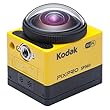I have not seen the first of the Insidious movies, but my roommate told me that I didn't have to. Insidious: Chapter 2 is very similar to the first movie and picks up right where the first one leaves off, so she gave me a brief summary. The first two Insidious films are about the Lambert family, who are connected to the spirit world through one of the sons, Dalton, and his father, Josh. In the first film, Dalton falls into a coma and is tormented by evil spirits in another realm called The Further. The family seeks the help of Elise Rainier to bring Dalton back to reality. At some point in the movie, Josh goes into The Further to bring Dalton back, but an evil spirit follows him out and continues to haunt the family throughout the second film.
There was a lot that was visually scary, but if I had watched the movie on mute, I'm sure I wouldn't have been as scared. The sound was so powerful. The score sounded like it had a lot of strings; I expected that. But I think what was most scary was the pairing of a quick, jarring sound with a striking or strange image.
This short scene is great for sound design analysis. Specs and Tucker, two ghost hunters, are in the house of Parker Crane, a man who died many years before that is connected to the Lambert family.
This scene is very short, but it's clear the sound sets up the audience to be spooked. The first line of dialogue, "Let's get out of here," is accompanied by silence. Then you hear the floor squeak for a second, until the sound grows and you realize it's coming from the rocking horses behind the guys. The rocking horses rock faster and faster until a little boy runs across the frame yelling "This is my room!" This is paired with a jarring, non-diegetic sound. These non-diegetic sounds inserted at key moments let the audience know what they should be scared of.
Another example of this is when Dalton recalls a dream he had the previous night. At 0:42, a strategic jump cut to a wider angle, coupled with the jarring sound and scary image of the woman in the white gown makes the audience jump. I hope to implement this strategic and classic horror ingredient in our film, Dollhouse.




















